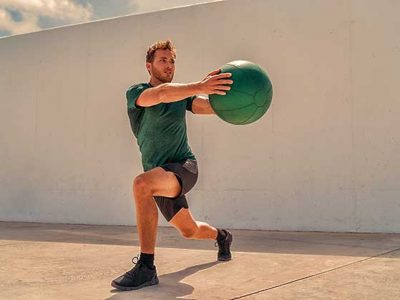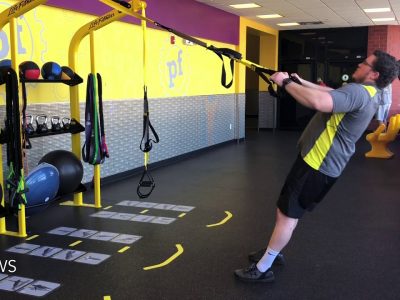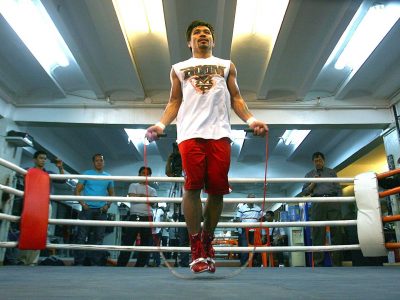Do you often wonder, “Why are my abs sore after jumping rope?” This common discomfort can be attributed to several factors including core stabilization, improper breathing, and even suboptimal nutrition.
In this article, we will unravel the secrets behind your post-jumping rope ab soreness and offer effective strategies for prevention and relief.
Bạn đang xem: Why Are My Abs Sore After Jumping Rope Updated 07/2024
Ready to jump into solutions? Let’s dive in!

Why Are Abs Sore After Jumping Rope?
Core stabilization from jumping
Jumping rope isn’t just about the arms and legs – it’s a full core workout, too. As you hop up and down, your abdominal muscles are hard at work stabilizing your body to maintain balance. This is called core stabilization, an often overlooked benefit of jumping rope.
The constant contraction and release in your abs during this process can result in soreness afterwards, especially if you’re new to the activity or have taken on a more intense routine than usual.
However, this ache is generally nothing to worry about as it indicates that the exercise is effectively targeting and strengthening these vital muscles.
Just like with any fitness regimen though, be sure not to overdo it!
Lack of core engagement
One reason why your abs may be sore after jumping rope is due to a lack of core engagement.
When you’re not actively using your core muscles while jumping, it puts extra strain on your abdominal muscles, leading to soreness and discomfort.
Your core plays an essential role in stabilizing your body during jump rope exercises, so neglecting to engage those muscles can lead to increased tension and potential muscle imbalances.
By focusing on engaging your core during each jump and maintaining proper form, you can alleviate some of the strain on your abs and reduce post-workout soreness.
Remember that by incorporating exercises specifically designed to strengthen your core into your workout routine, such as planks or Russian twists, you can better prepare those muscles for the demands of jump rope workouts.
Additionally, practicing proper breathing techniques while jumping helps engage the deep abdominal muscles even further, providing additional support and reducing the likelihood of soreness.
Incorrect breathing technique
Improper breathing technique during jump rope workouts can contribute to sore abs. When you don’t breathe correctly, it can lead to tension and strain in the abdominal muscles.
Additionally, inadequate oxygen intake can hinder your performance and make the workout feel more challenging than it needs to be.
Xem thêm : How Much Does A Treadmill Weigh Updated 07/2024
Remember, proper breathing while jumping rope involves inhaling through your nose and exhaling through your mouth in a controlled manner.
This allows for better engagement of your core muscles, including the abs, resulting in a more effective workout that minimizes post-workout soreness.
Nutrition and hydration factors
Proper nutrition and hydration play a crucial role in preventing and relieving sore abs after jumping rope.
When it comes to nutrition, it’s important to fuel your body with the right nutrients before and after your workouts.
Adequate protein intake helps repair and build muscle tissues, while carbohydrates provide energy for your jump rope sessions.
Additionally, hydrating yourself throughout the day is essential for optimal muscle function and recovery.
Dehydration can make your muscles more prone to soreness, so remember to drink plenty of water both during exercise and throughout the day.
Proper hydration also aids in digestion and nutrient absorption, helping your body effectively recover from intense workout sessions.
To maximize the benefits of jumping rope for your abs, aim for a well-rounded diet that includes lean proteins like chicken or fish, whole grains such as quinoa or brown rice, fruits and vegetables rich in vitamins and minerals, as well as healthy fats from sources like avocados or nuts.
Potential injury or strain
Jumping rope can be a high-impact exercise that puts stress on your muscles, including your abs. This can lead to potential injuries or strains if not done properly.
One common injury is the strain of the abdominal muscles due to excessive exertion or overuse.
It’s important to listen to your body and not push yourself too hard, especially if you’re new to jumping rope or have weak core muscles.
Another potential injury is damage to the spine from poor form or technique while jumping rope. Make sure you maintain proper posture and engage your core throughout the workout.
Also, avoid twisting or jerking motions that could strain your lower back.
Preventing and Relieving Sore Abs After Jumping Rope
Proper warm-up and cool-down exercises
To prevent and relieve sore abs after jumping rope, it’s important to incorporate proper warm-up and cool-down exercises into your workout routine.
These exercises help prepare your muscles for the intensity of the jump rope workout and aid in their recovery afterward.
Xem thêm : Is Rowing Machine Good For Your Back Updated 07/2024
Here are some essential warm-up and cool-down exercises to consider:
- Dynamic stretching: Start with dynamic stretches that target the muscles you’ll be using during the jump rope workout. This can include leg swings, arm circles, torso twists, and lunges.
- Jumping jacks: Perform a few sets of jumping jacks to get your heart rate up and increase blood flow to your muscles.
- High knees: Lift your knees as high as possible while jogging in place for about 30 seconds to activate your core and lower body muscles.
- Jump rope skill drills: Before starting your main jump rope session, spend a few minutes practicing basic jump rope skills like alternate foot jumps, single leg jumps, or crossing jumps. This helps activate your core muscles specifically for the upcoming workout.
- Foam rolling: After the jump rope workout, use a foam roller to massage any tight or sore areas in your abs and other muscle groups worked during the exercise. This can help with muscle recovery and reduce any post-workout soreness.
Gradually increasing intensity and duration of jump rope workouts
To maximize the benefits of your jump rope workouts and prevent sore abs, it’s important to gradually increase the intensity and duration of your exercises.
Here’s how you can do it:
- Start with shorter sessions: Begin by incorporating short jump rope sessions into your workout routine. Aim for 5-10 minutes initially to allow your body to adapt to the exercise.
- Increase the duration gradually: As you build stamina and endurance, gradually increase the duration of your jump rope workouts. Add an extra minute or two every week until you reach your desired workout length.
- Adjust the speed: Once you feel comfortable with longer durations, challenge yourself by increasing the speed of your jumps. This will intensify the workout for your abs and other muscle groups.
- Incorporate intervals: To further push yourself and improve cardiovascular fitness, include interval training in your jump rope routine. Alternate between periods of high-intensity jumping and brief recovery periods.
- Implement advanced techniques: Once you have built a solid foundation, consider incorporating more advanced jump rope techniques such as double unders or criss-cross jumps. These variations engage the core muscles even more, leading to greater strength gains in your abs.
Implementing core-strengthening exercises
To prevent and relieve sore abs after jumping rope, it’s important to implement core-strengthening exercises.
These exercises help to build and strengthen the muscles in your abdomen, reducing the likelihood of soreness and injury
. Here are some core-strengthening exercises you can incorporate into your routine:
- Plank: Get into a push-up position with your forearms on the ground, elbows directly beneath your shoulders. Engage your core and hold this position for 30 seconds to a minute.
- Russian twists: Sit on the ground with your knees bent and feet flat on the floor. Lean back slightly while keeping your back straight. Clasp your hands together and twist from side to side, touching the floor on each side.
- Dead bugs: Lie on your back with your arms extended towards the ceiling and legs bent at a 90-degree angle. Slowly lower one arm overhead while simultaneously extending the opposite leg towards the ground. Return to starting position and repeat on the other side.
- Bicycle crunches: Lie on your back with your hands behind your head and knees bent at a 90-degree angle. Alternate bringing each elbow towards the opposite knee as you extend one leg out straight.
- Mountain climbers: Start in a high plank position with hands directly under shoulders, core engaged, and body in a straight line. Bring one knee towards your chest then quickly switch legs as if you were running in place.
Stretching and foam rolling for muscle recovery
To help prevent and relieve sore abs after jumping rope, incorporating stretching and foam rolling into your routine can be highly beneficial.
Here’s why:
- Increases blood flow: Stretching before and after your jump rope workouts helps to increase blood circulation to the muscles, promoting faster recovery and reducing soreness.
- Improves flexibility: Regular stretching can improve the flexibility of your abdominal muscles, making them more resilient to the demands of jump rope exercises.
- Loosens tight muscles: Foam rolling targets specific areas of muscle tightness or trigger points, providing deep tissue massage that helps release tension and alleviate muscle soreness in the abs.
- Enhances range of motion: Stretching and foam rolling increases the range of motion in your abdominal muscles, which can improve performance during jump rope exercises and reduce strain on the muscles.
- Promotes muscle recovery: Stretching and foam rolling aid in flushing out lactic acid buildup from your abdominal muscles, reducing post-workout soreness and accelerating recovery.
Consulting with physiotherapist for guidance
These experts have extensive knowledge and experience in the field of exercise science and can provide tailored advice to address your specific concerns.
They can assess your form, technique, and overall fitness level to determine if any adjustments need to be made during your jump rope workouts.
Additionally, they can recommend exercises or stretches that target the core muscles specifically, helping you strengthen them effectively and prevent future soreness.
Seeking professional guidance ensures that you are engaging in safe and effective workouts while maximizing the benefits of jumping rope for your abs.
Conclusion
In conclusion, soreness in the abs after jumping rope is a common occurrence due to the engagement of core muscles during the workout.
This can be caused by inadequate core stabilization, incorrect breathing technique, or even lack of proper nutrition and hydration.
However, with proper warm-up and cool-down exercises, gradual increase in intensity and duration of jump rope workouts, as well as incorporating core-strengthening exercises, you can prevent and relieve sore abs.
Happy jumping!
Nguồn: https://usgyms.net
Danh mục: Gym Equipment










